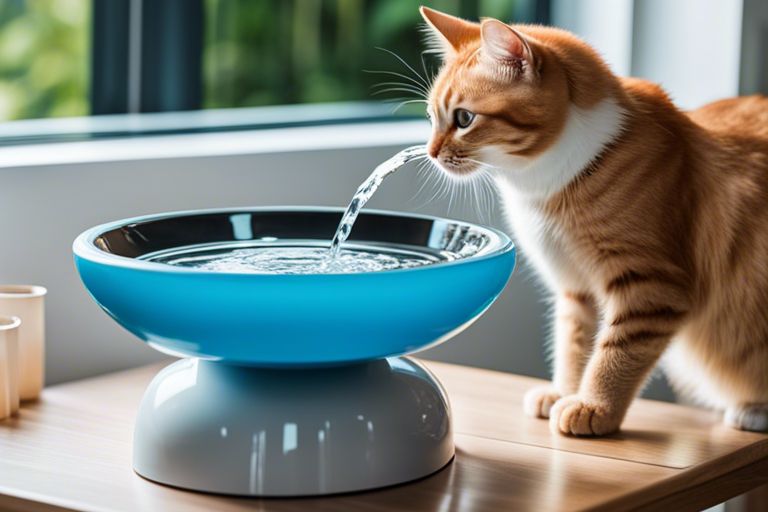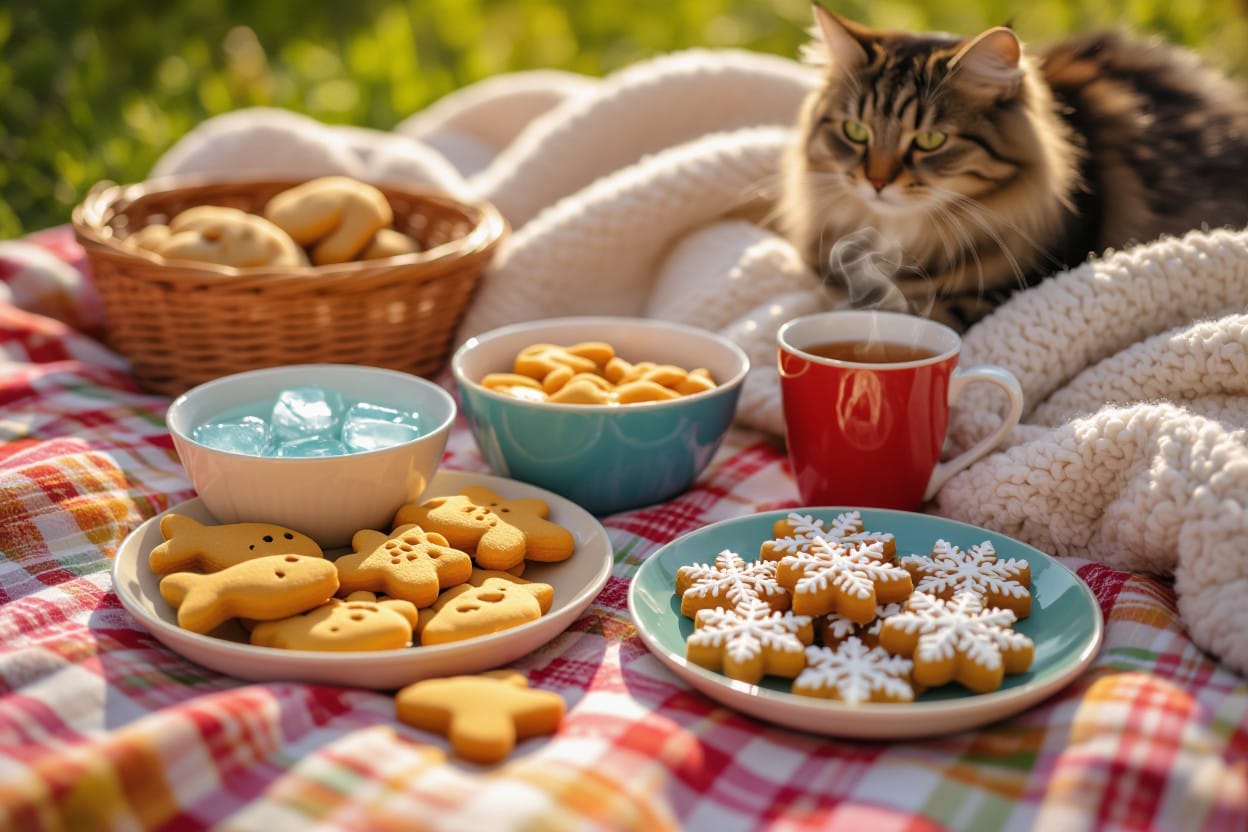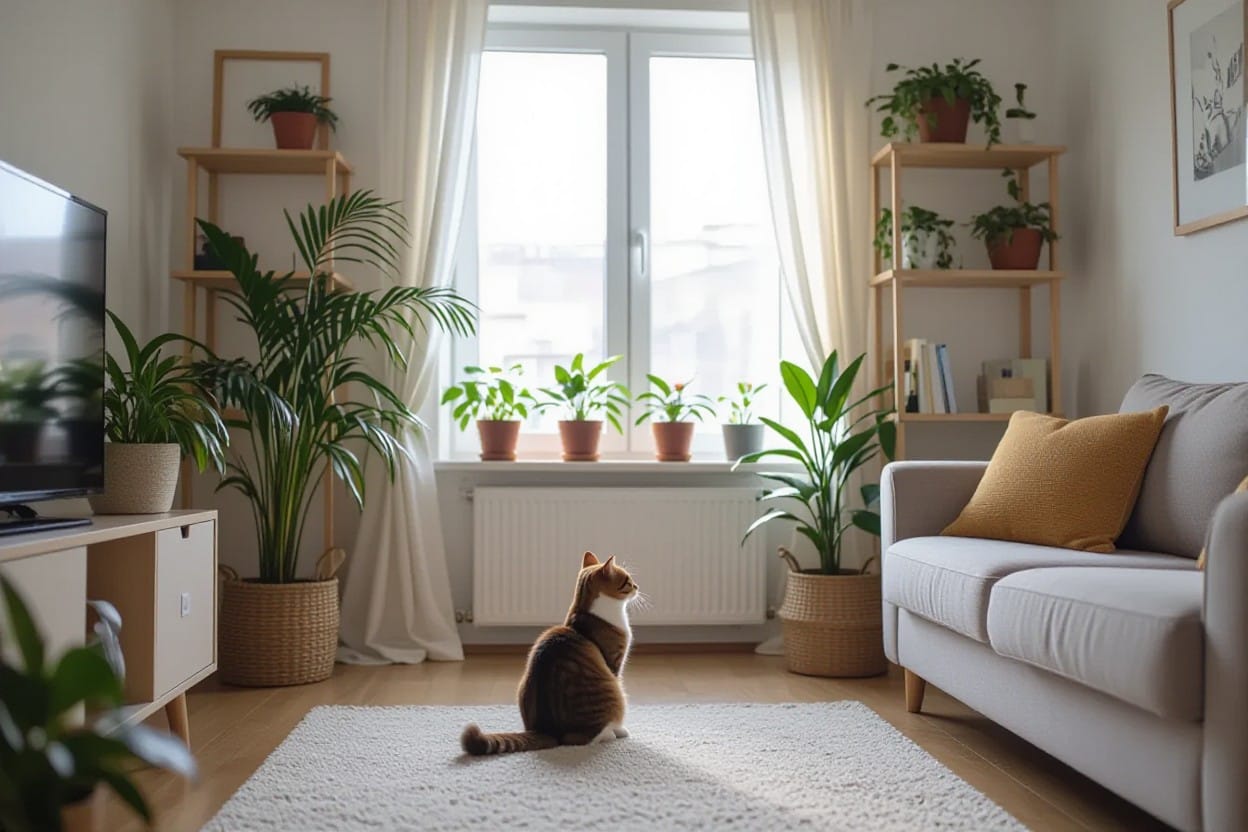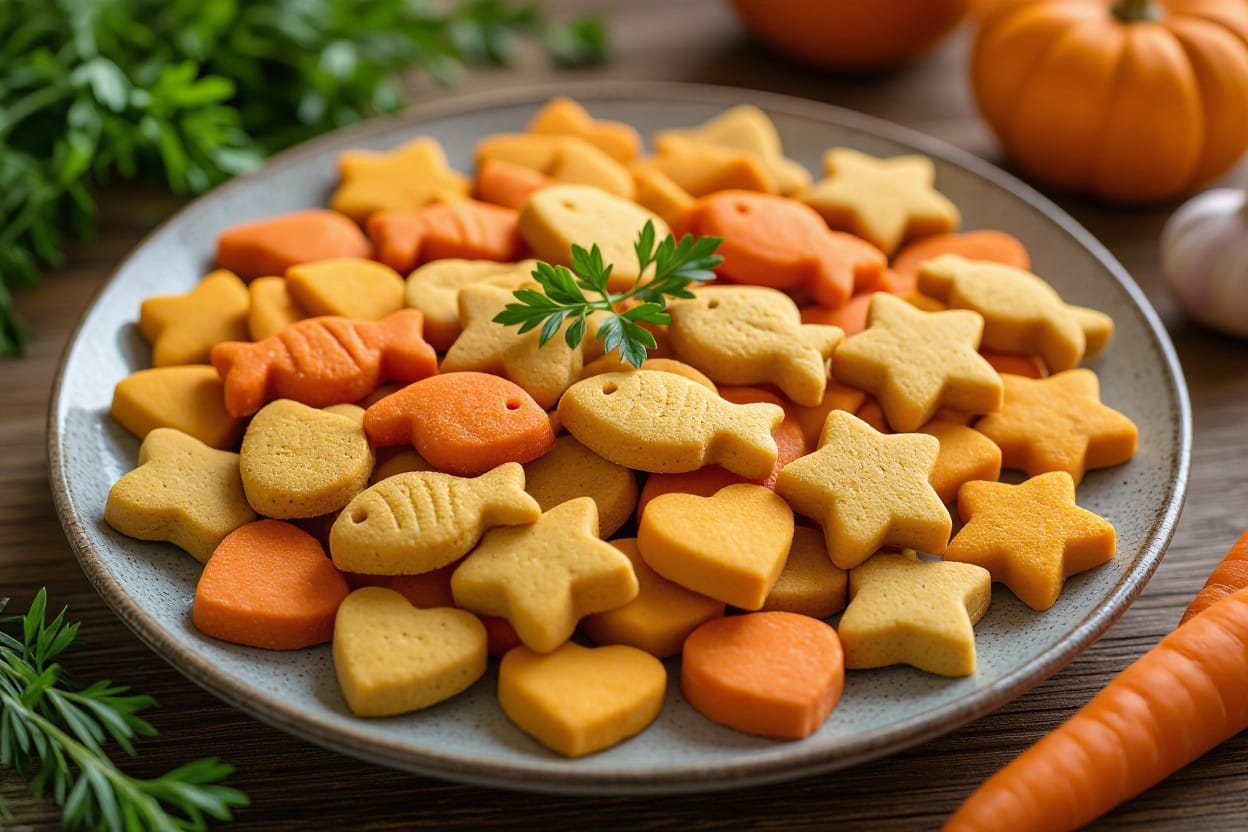You know how crucial hydration is for your feline friend’s health and well-being. Cats depend on proper hydration to support their overall health, maintain vital organ function, and prevent urinary issues. In this post, we will explore the significance of ensuring your cat stays adequately hydrated and ways to encourage them to drink more water.
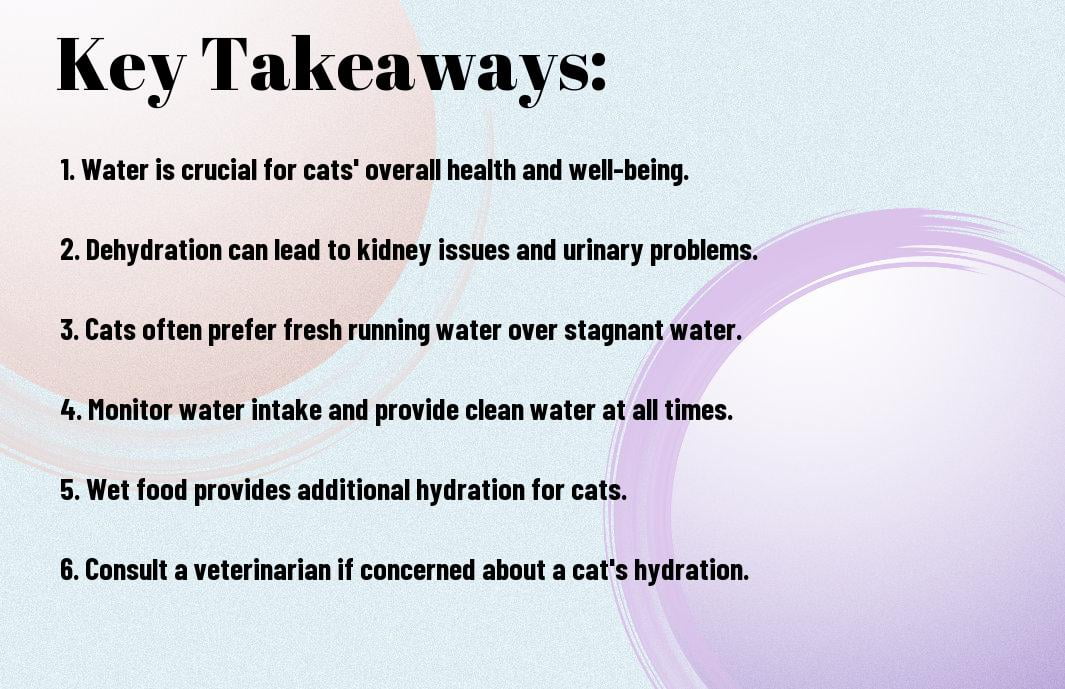
Understanding Cat’s Water Needs
Some cat owners may not realize the critical role that proper hydration plays in their feline companion’s overall health. Water is crucial for cats to maintain proper kidney function, regulate body temperature, aid digestion, and keep their skin and coat healthy. Without adequate water intake, cats can become dehydrated, leading to serious health issues.
How Much Water Do Cats Need?
Much like humans, the amount of water a cat needs can vary based on factors such as age, size, diet, and activity level. On average, a healthy adult cat should consume around 1.5 to 4 ounces of water per 5 pounds of body weight per day. This translates to roughly 3.5 to 7.5 ounces of water for a 10-pound cat.
Factors Affecting a Cat’s Hydration Requirements
- Age: Kittens and senior cats may require more water than adult cats.
- Diet: Cats eating dry food may need to drink more water than those on a wet food diet.
- Health: Cats with certain health conditions like kidney disease may require increased water intake.
Factors affecting a cat’s hydration requirements can be influenced by various elements in their environment and lifestyle. It’s crucial for cat owners to be mindful of these factors to ensure their feline friend stays properly hydrated. Monitoring water intake, providing fresh water daily, and offering wet food are simple yet effective ways to help maintain your cat’s hydration levels.
Signs of Dehydration in Cats
While cats are known for their ability to conserve water, dehydration can still occur if they do not have access to enough fluids or if they are suffering from an underlying health issue. It is crucial for cat owners to be able to recognize the signs of dehydration in their feline companions.
Symptoms of Mild to Moderate Dehydration
For cats experiencing mild to moderate dehydration, you may notice symptoms such as dry gums, tacky saliva, loss of skin elasticity, and sunken eyes. These signs can indicate that your cat is not getting enough water to maintain proper hydration levels. It is important to address dehydration in its early stages to prevent it from progressing to a more severe state.
Recognizing Severe Dehydration
Moderate to severe dehydration in cats can lead to more serious symptoms such as lethargy, rapid heart rate, panting, and collapse. In severe cases, dehydration can be life-threatening and require immediate veterinary attention. If you suspect that your cat is severely dehydrated, it is crucial to seek help from a veterinarian as soon as possible to rehydrate your feline friend and address any underlying causes.
Benefits of Proper Hydration
Physical Health Advantages
Many benefits come from ensuring your cat is adequately hydrated. An imperative advantage is the maintenance of proper kidney function. Adequate hydration helps to prevent kidney issues like urinary tract infections, kidney stones, and chronic kidney disease. Proper hydration also aids digestion, as water is crucial for breaking down food and absorbing nutrients effectively.
Behavioral Benefits and Well-being
Many behavioral benefits result from keeping your cat well-hydrated. Cats that are properly hydrated are usually more active, playful, and alert. Dehydration can lead to lethargy, mood changes, and even aggression in cats. Besides, well-hydrated cats are generally happier and exhibit less stress or anxiety-related behavior.
For instance, a cat that is dehydrated may become more irritable and less willing to engage in play or social interactions. This can impact their overall happiness and quality of life. By ensuring proper hydration, you can help promote a more positive and content demeanor in your feline companion.
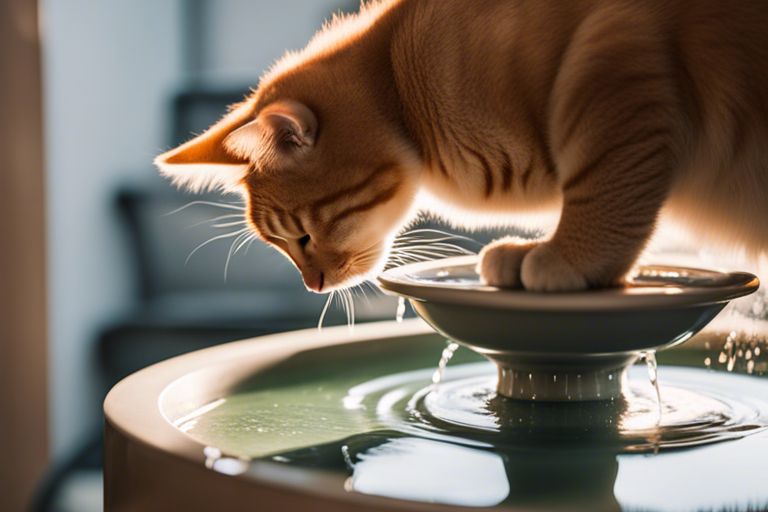
Sources of Water for Cats
Your feline friend’s health depends on proper hydration, so it’s vital to provide sources of water for your cat. Cats can be picky about their water sources, so it’s vital to offer options that appeal to their preferences.
Types of Water Bowls and Fountains
Your cat may prefer running water over still water, so a fountain could entice them to drink more. Ceramic or stainless steel bowls are good options as they are easy to clean and don’t hold onto bacteria as easily as plastic bowls. Any changes in water consumption should be monitored and discussed with your veterinarian to rule out any underlying health issues.
| Material | Pros |
| Ceramic | Durable and non-porous |
| Stainless Steel | Easy to clean and resistant to bacteria |
| Plastic | Lightweight and inexpensive, but can harbor bacteria |
| Fountains | Encourage more drinking due to flowing water |
| Automatic Dispensers | Ensure a constant supply of fresh water |
Wet Food vs. Dry Food: Hydration Impact
With their low thirst drive, cats often don’t consume enough water from a bowl. Wet food diets can be beneficial as they provide additional moisture, aiding in proper hydration. Plus, canned food has a lower carbohydrate content, which can benefit your cat’s overall health.
Encouraging Your Cat to Drink More Water
Placement and Accessibility of Water Dishes
For cats, the location and visibility of their water dish are crucial factors in determining their water intake. Place water dishes away from litter boxes and food bowls as cats prefer to have some distance between these areas. Additionally, ensure that your cat has access to water in multiple locations throughout your home to encourage more frequent drinking.
Strategies to Stimulate Interest in Water
Water fountains can be a great way to entice cats to drink more water. The sound and movement of flowing water can grab your cat’s attention and make them more interested in drinking. Another strategy is to experiment with different types of water dishes – some cats prefer ceramic, glass, or stainless steel bowls over plastic ones. You can also try adding ice cubes to your cat’s water bowl or even flavoring the water with a bit of tuna juice to make it more appealing.
This kind of variety and stimulation can pique your cat’s curiosity and encourage them to drink more water throughout the day, improving their overall hydration levels.
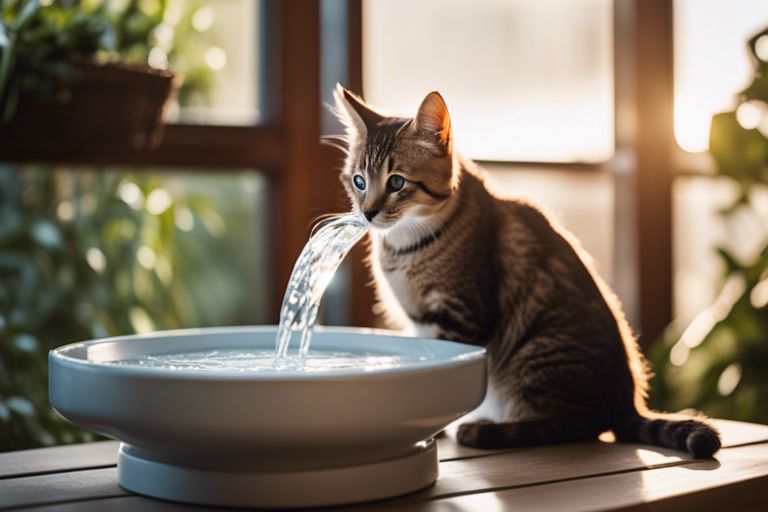
Monitoring and Maintaining Adequate Hydration
Unlike dogs, cats are not always great at self-regulating their water intake, making it imperative for owners to monitor and ensure their feline friends are adequately hydrated. This can be achieved through regular check-ups and hydration assessments to proactively manage any hydration imbalances.
Regular Check-ups and Hydration Assessment
Regular veterinary check-ups are crucial for monitoring your cat’s overall health, including their hydration levels. During these visits, your vet can conduct a physical examination to check for signs of dehydration, such as sunken eyes, dry gums, or poor skin elasticity. Additionally, they may recommend blood work to assess kidney function, a common indicator of hydration status in cats.
Understanding and Managing Seasonal Changes in Hydration Needs
Understanding the impact of seasonal changes on your cat’s hydration needs is vital for maintaining their well-being. Cats may require more water during hot summer months or if they are primarily indoors with dry air from heating systems during winter. It’s imperative to monitor their water intake during these times and provide fresh water sources to encourage proper hydration.
Checkups and assessments play a significant role in identifying any issues early and taking necessary steps to address them before they escalate. By staying vigilant and proactive in monitoring your cat’s hydration levels, you can help prevent dehydration-related health issues and ensure your feline companion stays happy and healthy.
Special Considerations
Hydration for Cats with Health Conditions
Special attention must be given to cats with health conditions that can affect their hydration levels. Cats with kidney disease, diabetes, or hyperthyroidism are at higher risk of dehydration. These conditions can cause increased urination, leading to a loss of fluids and electrolytes. It is crucial for cat owners to work closely with their veterinarian to develop a hydration plan that meets the specific needs of their feline companion.
The Role of Diet in Maintaining Hydration
For cats, a diet rich in moisture is vital for maintaining proper hydration levels. Wet food is a great option as it contains higher water content compared to dry kibble. Feeding canned or raw food can significantly increase a cat’s daily water intake, promoting kidney function and overall hydration. Additionally, incorporating water fountain or adding water to dry food can also help encourage cats to drink more water throughout the day.
Understanding the importance of a well-balanced diet in maintaining hydration is key to promoting a cat’s overall health and well-being. Providing access to fresh water at all times, feeding moisture-rich food, and monitoring your cat’s water intake are vital steps in ensuring that your feline friend stays properly hydrated.
To wrap up
Summing up, proper hydration is crucial for maintaining the health and well-being of your feline companion. Cats are relatively low water drinkers by nature, making it imperative for pet owners to ensure they have access to fresh water at all times. Dehydration can lead to various health issues, including urinary tract problems, kidney disease, and more, so it’s important to encourage your cat to drink water regularly.
By understanding the importance of proper hydration for cats and taking proactive steps to promote water intake, you can help your furry friend stay healthy and happy for years to come. Remember to provide clean water in multiple places, offer wet food, and monitor your cat’s water intake to ensure they are staying properly hydrated. Your cat’s health is in your hands, so make sure they have plenty of opportunities to drink water throughout the day.
FAQ
Q: Why is proper hydration important for cats?
A: Proper hydration is crucial for maintaining a cat’s overall health and well-being. Water plays a vital role in regulating body temperature, aiding digestion, flushing out toxins, and keeping organs functioning properly.
Q: How much water should a cat drink in a day?
A: Cats should ideally drink 3.5-4.5 ounces of water per 5 pounds of body weight per day. However, this amount can vary based on factors such as diet, age, activity level, and health status.
Q: What are the signs of dehydration in cats?
A: Some common signs of dehydration in cats include dry or tacky gums, sunken eyes, lethargy, loss of appetite, and decreased skin elasticity. It’s important to seek veterinary attention if you suspect your cat is dehydrated.
Q: How can I encourage my cat to drink more water?
A: You can encourage your cat to drink more water by providing fresh water in a clean bowl daily, offering wet food, adding water fountains or dripping faucets, and even flavoring water with a low-sodium broth.
Q: What are some health benefits of proper hydration for cats?
A: Proper hydration can help prevent urinary tract infections, kidney disease, and constipation in cats. It also promotes healthy skin and coat, improves circulation, and supports overall organ function.
